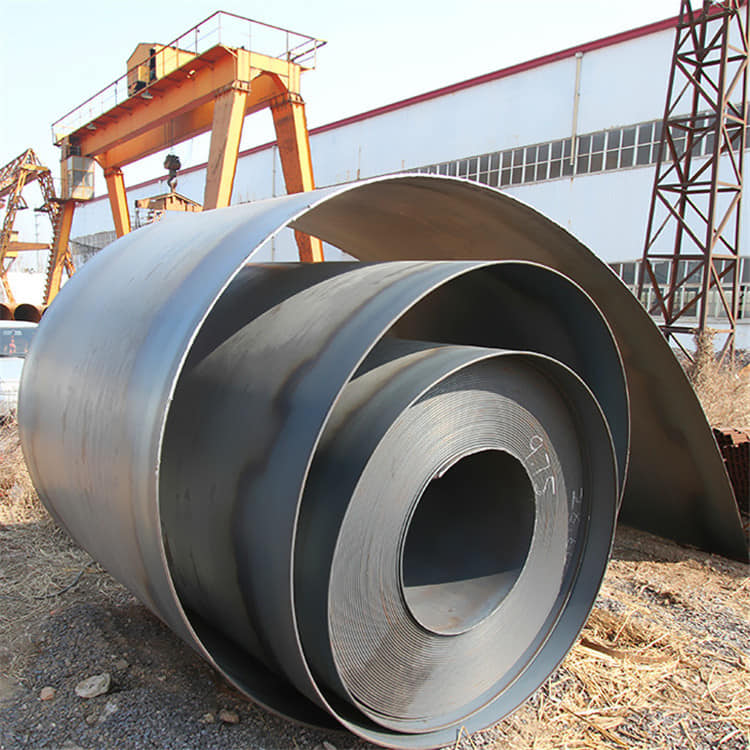- Home
- News
- Galvanized Spangle vs. Non – Spangle GI Shining Steel: Key Differences and Selection Guide
Galvanized Spangle vs. Non – Spangle GI Shining Steel: Key Differences and Selection Guide
Galvanized steel coils are really common in construction and industrial uses. They come in two main surface types: galvanized spangle, which has a pattern of zinc crystals, and non – spangle, which is smooth and shiny. This article explains the technical differences, what’s good and bad about each type, and where they work best. We’ll focus on words like “galvanized steel plate”, “hot dip galvanizing”, and “building materials” to help you make smart choices when buying.
1. Introduction to Hot Dip Galvanizing
Hot dip galvanizing (HDG) is a way to coat steel with molten zinc. This makes the steel more resistant to rust. Whether you get a galvanized spangle (the visible zinc crystal pattern) or a non – spangle GI shining surface depends on how you cool the steel and what alloys are in the zinc. Both kinds, like galvanized roofing sheets and galvanized steel coils, are really important in construction and industry.
2. Galvanized Spangle: Features and Applications
Advantages
◦ Looks Good: The unique crystal pattern of galvanized spangle makes it look nice. It’s great for parts of buildings that are out in the open.
◦ Saves Money: It doesn’t need a lot of extra processing after the galvanizing. This cuts down on the cost of making building materials.
◦ Lasts a While: It can handle normal levels of corrosion because the zinc sticks well to the steel.
◦ Rough Surface: The spangled texture can make it hard for paint to stick evenly or for other coatings to go on smoothly.
◦ Not Precise Enough: It’s not a good choice if you need a very smooth surface, like for automotive panels.
Disadvantages
◦ Rough Surface: The spangled texture can make it hard for paint to stick evenly or for other coatings to go on smoothly.
◦ Not Precise Enough: It’s not a good choice if you need a very smooth surface, like for automotive panels.
Best Use: Good for farm buildings, decorative galvanized roofing sheets, and parts in industry that aren’t too important.
3. Non – Spangle GI Shining Steel: Features and Applications
Advantages
◦ Smooth Surface: The even GI shining finish helps paint stick better and makes it easier to print on. This is important for high – quality construction projects.
◦ Better at Stopping Rust: The zinc layer has fewer tiny cracks, so it can last longer in tough environments.
◦ Can Be Shaped in Different Ways: It works well with advanced ways of shaping metal, like deep drawing and embossing.
◦ Costs More: It needs extra processing, like quenching and skin – pass rolling, which makes it more expensive to produce.
◦ Not as Unique – Looking: It doesn’t have the traditional spangle look that some people like.
Disadvantages
◦ Costs More: It needs extra processing, like quenching and skin – pass rolling, which makes it more expensive to produce.
◦ Not as Unique – Looking: It doesn’t have the traditional spangle look that some people like.
Best Use: Great for high – end building exteriors, car parts, and precision – made galvanized steel plates.
4. Key Factors for Customer Selection
- Where It Will Be Used:
◦ Galvanized spangle: Good for places with normal weather and not too much humidity.
◦ Non – spangle: Better for areas near the coast or in industrial zones where there’s a lot of risk of corrosion.
- How It Should Look:
◦ Spangled surfaces are good for old – fashioned or country – style designs.
◦ Smooth GI shining surfaces fit modern building trends.
- How Much You Want to Spend:
◦ Spangle finishes can save money for big projects.
◦ Non – spangle types are worth the higher cost if you want long – lasting durability.
- How You’ll Work with the Material:
◦ Non – spangle coils are better if you’re going to use laser cutting or powder coating.
5. Optimized Conclusion
When you’re choosing between galvanized steel coil types, think about how well it will stand up to the environment, what it should look like, and how much you can spend. Galvanized roofing sheets with spangle patterns are a cheap option for decorative uses. Non – spangle galvanized steel plates work better for tough construction projects. Knowing about the hot dip galvanizing process and how it affects the surface can help you pick the right material for it to last and work well.
Keywords: Galvanized steel coil, GI shining, Galvanized spangle, Galvanized roofing sheet, Construction building, Hot dip galvanizing, Galvanized steel plate, Building materials
References (For SEO Credibility)
- American Galvanizers Association. (2023). Hot – Dip Galvanizing for Corrosion Protection.
- International Zinc Association. (2022). Zinc Coatings in Construction.
- ASTM International. (2021). Standards for Galvanized Steel Products.
